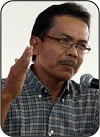Historizing the City of Pekalongan
Abstract
ABSTRACT: Historizing a collective life requires moments of time which construct a shared memory, moments in time that have brought a revolutionary change in the collective life, moments of marking that shared life in the progressive time sequencing, and moments of repetitions of what has been lived and experienced in that collectiveness. Without a moment of revolutionary change, the finding of that moment in history would seek into other forms of acknowledgement. Accordingly, the Pekalongan city in Central Java has a significant role in the development of batik production in Indonesia; and so, in 2011, this city was launched as the “world batik city” by the government. This gesture was made to re-activate the dynamics of life in Pekalongan as it has experienced a decline in its industrial productivity. Other local potentials that support the characteristics of Pekalongan as a batik city have also been re-activated and upgraded, such as conserving the local batik kampongs, “Kauman” and “Pesindon”, to be part of the national batik tourist destination areas. This writing will analyze how the life in Pekalongan underwent its historical process and how the external and internal factors interacted and weaved the various texture of life as it became the local color and identity of Pekalongan. Qualitative analysis methods are used in this writing to redefine what is commonly understood as a process of historization, and how this understanding can be used to look at the different contexts of life in Pekalongan. The finding of this research will show other possibilities that can be explored in the process of redefining and historizing the life of this city.
KEY WORDS: Historizing, collective life, batik, Pekalongan, world batik city, tourist destination area, local color and identity, and redefining of history.


About the Authors: Katherina Allo is a Doctoral Student at the Faculty of Fine Arts and Design ITB (Bandung Institute of Technology), Jalan Ganesha No.10 Tamansari, Bandung, West Java, Indonesia; and Prof. Dr. Yasraf Amir Piliang is a Lecturer at the Faculty of Fine Arts and Design ITB Bandung, West Java, Indonesia. For academic interests, corresponding author is: ar97ka@indo.net.id
How to cite this article? Allo, Katherina & Yasraf Amir Piliang. (2015). “Historizing the City of Pekalongan” in TAWARIKH: International Journal for Historical Studies, Vol.7(1) October, pp.99-110. Bandung, Indonesia: Minda Masagi Press, ISSN 2085-0980.
Chronicle of the article: Accepted (August 29, 2015); Revised (September 27, 2015); and Published (October 28, 2015).
Full Text:
PDFReferences
Asa, Kusnin. (2006). Batik Pekalongan dalam Lintasan Sejarah. Yogyakarta: Cahaya Timur Offset.
Bappedakot [Badan Perencanaan dan Pembangunan Daerah Kota] Pekalongan. (2006). Kajian dalam Rangka Penelusuran Hari Jadi Kota Pekalongan. Pekalongan: Badan Perencanaan dan Pembangunan Daerah Kota Pekalongan.
Bilal, Icha. (2011). “Asal Usul Nama Kota Pekalongan”. Available online also at: http://www.kompasiana.com/ichabilal/asal-usul-nama-kota-pekalongan_5500a7d9a333117f725118d5 [accessed in Bandung, Indonesia: April 9, 2015].
Benjamin, Walter. (1999). The Arcades Project. Harvard: The Belknap Press and Harvard University Press, firstly published in 1930.
Day, Clive. (1972). The Policy and Administration of the Dutch in Java. Kuala Lumpur, New York, London, and Melbourne: Oxford University Press.
de Certeau, Michel. (1984). The Practice of Everyday Life. California: University of California Press.
Doellah, H. Santosa. (2003). Batik : The Impact of Time and Environment. Solo: Danar Hadi.
Fraser-Lu, Sylvia. (1986). Indonesian Batik : Processes, Patterns, and Places. Singapore: Oxford University Press.
Gie, The Liang. (1993). Pertumbuhan Pemerintahan Daerah di Negara Republik Indonesia, Jilid I. Yogyakarta: Liberty.
Heidegger, Martin. (1962). Being and Time. New York: Harperperennial Modernthought.
Heidegger, Martin. (1985). History of the Concept of Time. USA [United States of America]: Indiana University Press.
Hein, George E. (2002). Learning in Museum: Batik Pekalongan. London: Routledge.
“History of Batik Pekalongan”. Available online also at: www.lintastulisan.blogspot.com/2013/05/history-batik-pekalongan.html [accessed in Bandung, Indonesia: April 9, 2015].
Lefebvre, Henri. (1974). The Production of Space. London: Blackwell Publishing.
Lombard, Denys. (2008). Nusa Jawa: Silang Budaya, Jilid II. Jakarta: PT Gramedia Pustaka Utama, Translation.
Margana, Sri & M. Nursam [ed]. (2010). Kota-kota di Jawa. Yogyakarta: Penerbit Ombak.
Musman, Asti & Ambar B. Arini. (2011). Batik: Warisan Adiluhung Nusantara. Yogyakarta: Penerbit G-Media.
News on “Mengenal Batik Lebih Dekat” in newspaper of Kompas. Jakarta: 16 October 2013.
Norberg-Schulz, Christian. (n.y.). Genius Loci: Towards Phenomenology of Place. USA [United States of America]: Rizzoli.
“Pekalongan”. Available online also at: www.en.wikipedia.org/wiki/pekalongan [accessed in Bandung, Indonesia: April 9, 2015].
Pemkot [Pemerintah Kota] Pekalongan. (2007). Lembaran Daerah Kota Pekalongan Tahun 2007 Nomor 13: Peraturan Daerah Kota Pekalongan Nomor 6 Tahun 2007 tentang Penetapan Hari Jadi Kota Pekalongan. Pekalongan: Pemkot Pekalongan.
Picture on “Home of an Arab Trader in Pekalongan”. Available online also at: http://commons.wikimedia.org/wiki/File:COLLECTIE_TROPENMUSEUM_Huis_van_een_Arabisch_hoofd_Pekalongan_Oost-Java_TMnr_10021095.jpg [accessed in Bandung, Indonesia: April 9, 2015].
Picture on “Jawa-Hokokai Batik Pattern”. Available online also at: http://commons.wikimedia.org/wiki/File:Batik_Jawa_Hokokai_Pekalongan_Tulis.jpg [accessed in Bandung, Indonesia: April 9, 2015].
Picture on “Buketan Pekalongan Batik Pattern”. Available online also at: https://www.pinterest.com/pin/446278644296248057/ [accessed in Bandung, Indonesia: April 9, 2015].
Pradito, Didit, Herman Jusuf & Saftyaningsih Ken Atik. (2010). The Dancing Peacock: Colours and Motifs of Priangan Batik. Jakarta: Gramedia Pustaka Utama.
Purnomo, Muh Arif Jati. (2008). “Batik Jawa Hokokai: Batik pada Masa Pendudukan Jepang di Pekalongan”. Unpublished Master Thesis. Yogyakarta: Program Pasca Sarjana ISI [Institut Seni Indonesia] Yogyakarta.
Ricklefs, M.C. (2005). Sejarah Indonesia Modern. Yogyakarta: Gadjah Mada University Pres, Translation.
“Sejarah Terbentuknya Pemerintah Kota Pekalongan”. Available online also at: www.pekalongan.go.id/Profil-Kota-Pekalongan/terbentuknya-pemerintah-kota-pekalongan.html [accessed in Bandung, Indonesia: April 9, 2015].
Setyaningsih, Diana Budhi. (2005). Tata Ruang Kota Pekalongan Tahun 1906-1939. Yogyakarta: Jurusan Arkeologi UGM [Universitas Gadjah Mada].
Situngkir, Hokky & Rolan Dahlan. (2009). Fisika Batik: Implementasi Kreatif Melalui Sifat Fraktal pada Batik secara Komputasional. Jakarta: Gramedia Pustaka Utama.
Sumarsono, Hartono et al. (2013). Benang Raja: Menyimpul Keelokan Batik Pesisir. Jakarta: Kepustakaan Populer Gramedia.
Susanto, Sewan. (1980). Batik Pekalongan dalam Seni Kerajinan Batik Indonesia. Jakarta: Balai Besar Batik dan Kerajinan, Departemen Perindustrian Republik Indonesia.
Wertheim, W.F. et al. [eds]. (1958). The Indonesian Town Studies in Urban Sociology. The Hague: W. van Hoeve Ltd.
Zaenuddin, H.M. (2014). Asal-usul Kota-kota di Indonesia Tempo Doeloe. Jakarta: Change.
